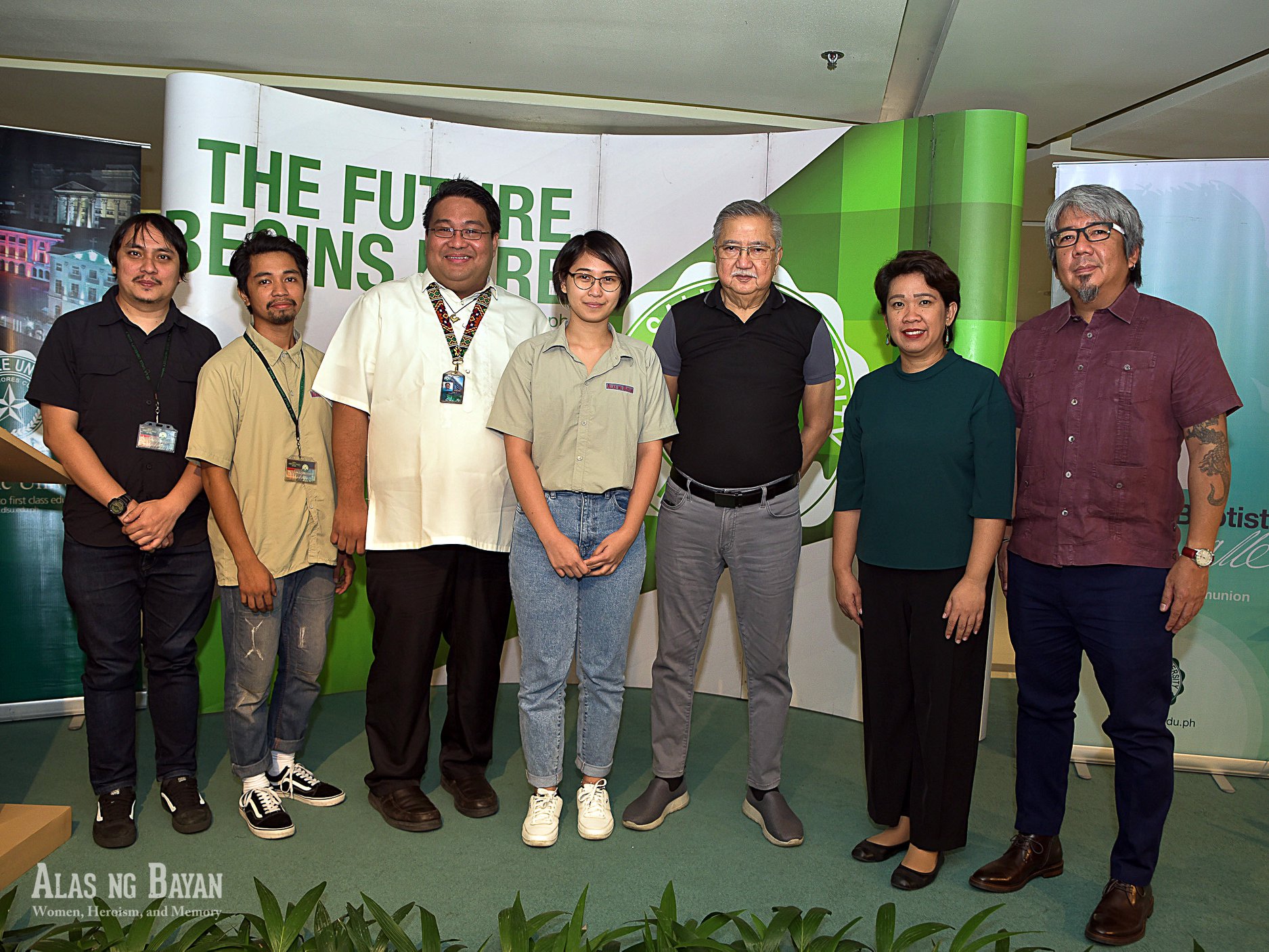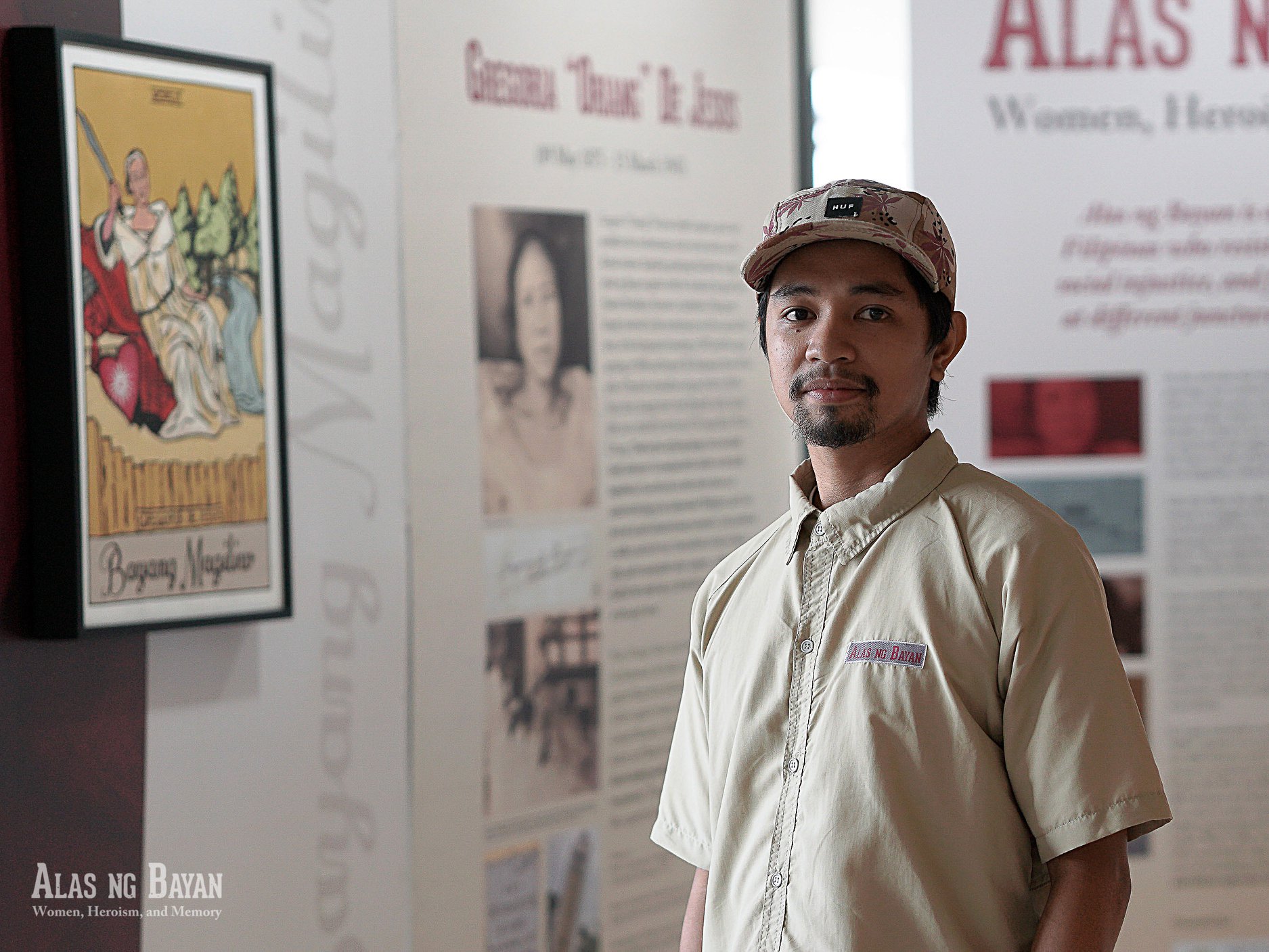Manila, 28 January 2020: The Alas Ng Bayan exhibit opened at the De La Salle University (DLSU) on January 27, 2020 and will run up to January 31. Jointly organized by the Institute for Climate and Sustainable Cities, the Constantino Foundation, and 350 Pilipinas, the exhibit launched at The Learning Commons of DLSU, hosted by the university’s Department of History and the Libraries.
Dr. Ma. Florina Orillos-Juan, chair and associate professor of the DLSU Department of History, welcomed the organizers, fellow faculty and history students to the launch, noting that women have been regarded as footnotes in Philippine history.
By putting a spotlight on Gregoria “Oriang” de Jesus, Apolonia Catra, Remedios “Kumander Liwayway” Gomez-Paraiso, Lorena Barros, and Gloria Capitan, the exhibit aims to raise awareness about the intersections between women, history, memory, climate change, and citizenship.

“Our intention is to inject history and feminism as fundamental elements in the way young people respond to the worsening state of national forgetting and the climate crisis. We hope viewers of the paintings and those who listen to the lectures that accompany the exhibit will discover the links between the lives of the women depicted in Alas ng Bayan and current topics under intense public debate, such as violence against women, LGBTQ+ rights, extrajudicial killings, global warming, and national sovereignty,” said RC Constantino, chairperson of the Constantino Foundation.
Artist John Erhard Guarin, a 350 Pilipinas volunteer, said he painted the five women in the style of sakla or tarot card because “they gambled with their lives to defy colonizers, dictators, corporations, sexists, and all kinds of injustices.”
“In the end, what we all aim for is a world that is not only socially just and ecologically sustainable, but one where we can defy stereotypes, resist empires, exhibit beauty amidst strife, serve the people, and sing our own songs,” said Chuck Baclagon, also a volunteer of 350 Pilipinas.
“May these paintings help us find connections and glimpses of our place in the struggle to shape history amidst the climate crisis grounded on beauty, solidarity, and shared humanity,” he added.
“Art has a unique way of providing us angles that, when done well, trespass boundaries of time and space. Art can help us understand life in all its complexity, and by doing so it helps us think for ourselves and sometimes to take action,” said Red Constantino, executive director of the Institute for Climate and Sustainable Cities and managing director of the Constantino Foundation. “Let the women guide us. Let us give thanks to them by getting to know them more. For by knowing our heroes we ultimately get to discover more about ourselves.”
Xiao Chua, assistant professorial lecturer of the DLSU Department of History, gave a lecture on Gregoria de Jesus as a true model of Filipino women and as a human rights defender. He paid tribute to Renato Constantino, the First Quarter Stormers of 50 years ago, and the power of art, and sang ‘Babae’ of Inang Laya, a group which included the late Karina Constantino David.

Chua said the song “makes us rethink Maria Clara as the model of the Filipina. In fact, Jose Rizal did not intend her to be a model – she was a warning. As Karina’s song reminds us, the Filipina is unafraid to fight, yearning to be free.”
He stressed that de Jesus was not a timid Lakambini who only safeguarded documents, but someone who also fought in the trenches and contributed to the Katipunan in many other ways. He added that contrary to recent putdowns of human rights as a Western concept, it is enshrined in documents such as the Kartilya ng Katipunan and the Decalogo of Apolinario Mabini.
